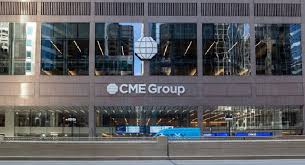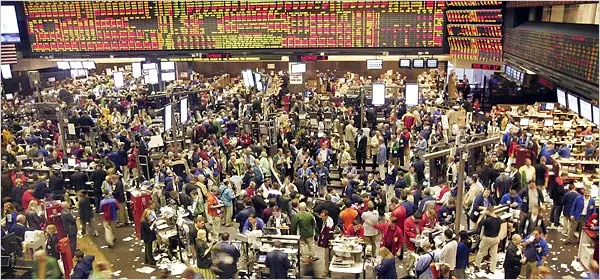Stay up-to-date on dairy market trends. Learn why prices are dropping and what the future may hold. How will high EU costs affect your business?
Summary:
The dairy market experienced notable declines this week, with cash prices on the Chicago Mercantile Exchange continuing their downward trend. While dry whey increased slightly to $0.5950, blocks, barrels, and butter saw significant drops, settling at $2.1750, $2.4275, and $2.86, respectively, while nonfat dry milk remained unchanged at $1.3775. European dairy prices remain higher than global competitors, adding to the competitive landscape. Futures markets showed mixed results, with Class III futures climbing to $22.60 per hundredweight and Class IV futures falling to $21.76 per hundredweight. An anticipated USDA Cold Storage report is expected to provide further insights, but current data suggests a bearish outlook for butter prices heading into Q4.
Key Takeaways:
- Cash dairy prices on the Chicago Mercantile Exchange continue to decline, with specific drops in whey, blocks, barrels, and butter prices.
- The US dairy market is volatile, particularly in the butter and cheese sectors, facing significant price declines and sell-offs.
- European cheese and butter remain significantly more expensive than their US and New Zealand counterparts, potentially affecting competitive positioning.
- Despite the bearish trend in spot butter prices, Class III futures have seen slight gains, indicating a complex market dynamic.
- The upcoming USDA Cold Storage report is expected to show changes in cheese and butter stocks, which could impact future price movements.
- The market shows robust trading volumes and a rise in open interest, reflecting active participation and potential future price fluctuations.
- Market participants closely monitor the balance between spot and futures prices, anticipating potential corrections and convergence.

The recent decline in cash dairy prices on the Chicago Mercantile Exchange has sparked anxiety and discussion among dairy farmers and experts. Dry whey saw a modest rise, but other vital commodities, such as blocks and barrels, fell. Butter also experienced a decrease. These changes, though seemingly minor, can have a significant and immediate impact on the industry. Understanding these market dynamics is crucial for dairy farmers and industry experts. It informs your decisions and empowers you to plan your operations and adjust your strategies to remain competitive. You can better protect your bottom line by being proactive and planning ahead. Let’s explore these changes and what they mean for you.
| Commodity | Price (per lb) | Change ($) | Volume |
|---|---|---|---|
| Dry Whey | $0.5950 | +0.0050 | Not traded |
| Blocks | $2.1750 | -0.0150 | Not traded |
| Barrels | $2.4275 | -0.1175 | Not traded |
| Butter | $2.8600 | -0.04 | Eight sales |
| Nonfat Dry Milk | $1.3775 | Unchanged | 13 sales |
Cash Dairy Prices: What’s Happening?
Let’s look at the most recent changes in CME cash dairy prices and what they tell us about the market. On Wednesday, dried whey prices rose slightly, from $0.0050 to $0.5950. Meanwhile, blocks fell $0.0150 to close at $2.1750, while barrels fell more significantly, down $0.1175 to $2.4275. On the butter front, the market eased as spot butter dipped $0.04 to $2.86, with eight sales transactions ranging from $2.86 to $2.8750. Finally, nonfat dry milk remained stable at $1.3775, backed by thirteen sales ranging from $1.3750 to $1.3825.
What do the price fluctuations tell us? The constant increase in dry whey reflects a minor demand increase. However, reducing block and barrel cheese prices might indicate an oversupply or declining demand. The drop in butter prices is a negative trend, implying that supply exceeds current demand, a feeling backed by the high trade volume. Even with vigorous trade, the consistent price of nonfat dry milk shows that the market dynamics in that category are balanced. These moves indicate a market under pressure, with negative trends in crucial dairy commodities. Dairy farmers might need to adjust their production levels to match the current demand. For industry experts, it suggests the need for innovative marketing strategies to stimulate demand. These are just a few examples of how understanding market dynamics can directly impact your operations and strategies.
The Price Premium of European Dairy: A Competitive Disadvantage?
When it comes to dairy prices, Europe stands out. European cheese costs $2.61 a pound, significantly more than $2.37 in the US and $2.01 in New Zealand. Similarly, European butter costs $4.18 a pound, vs. $2.90 in the US and New Zealand. These significant disparities warrant a more profound examination of the factors at play. The European dairy market is known for its high-quality products and stringent regulations, contributing to higher prices. However, these higher prices also put European dairy at a competitive disadvantage in the global market.
Why do European dairy products cost more? Several variables are in play. One major cause is the increased cost of manufacturing. European farmers confront increased rules on animal welfare and environmental measures, which, although good in many ways, increase their operating expenses. Second, EU subsidies and trade policies may distort market pricing, increasing domestic dairy prices.
These rising prices have a knock-on impact on global commerce. Despite being a significant participant in the global dairy industry, Europe has a competitive disadvantage due to higher pricing. This reduces European dairy’s global competitiveness and impacts importers searching for low-cost alternatives. Consequently, nations with lower-priced dairy products, such as the United States and New Zealand, often gain a more extensive worldwide market share.
Although Europe’s dedication to quality and sustainability in dairy production is admirable, it comes at a higher cost, affecting local and worldwide markets. This dynamic is critical for dairy professionals to follow. It affects trade patterns and keeps you connected to the competitive positioning in an increasingly globalized world.
Let’s Dive into the Current State of Dairy Futures and What the Recent Trends Might Mean for the Market Moving Forward. The recent trends in dairy futures could potentially significantly impact the market. Dairy farmers and industry experts must stay alert and prepared for potential changes. Let’s look at the present situation of dairy futures and what recent changes may indicate for the market.
While current butter prices have plunged, Class III futures have risen to $22.60 per hundredweight, up 15 cents. In contrast, Class IV futures fell by 24 cents to close at $21.76 a hundredweight. This difference reflects varied market expectations for various dairy product groups.
Butter futures have dropped to $2.8920 a pound, mirroring current prices. This reduction is consistent with the current price’s downward trend, indicating unfavorable market sentiment. There has been conjecture that the $2.80 level may serve as a support level, perhaps stopping additional falls in the short future. However, given the overall market patterns and increased transaction volumes, we may see more decline.
Similarly, cheese futures are showing signals of instability. Barrel cheese futures fell significantly, dropping 11.75 cents to $2.4275 a pound, slightly over the $2.40 offer. Block cheese futures have also fallen, but at a slower pace, suggesting reduced demand in the last week. As sellers of fresh cheese attempt to offload surplus stock, we may see more excellent trading activity in these futures contracts.
NFDM futures have also seen substantial selling, resulting in 1-2 cent price cuts. Despite this, the spot market for NFDM has remained consistent, resulting in a short time for market players to reevaluate US NFDM futures in light of worldwide pricing.
What is the takeaway from all of these moving parts? Market players will consider these patterns when the USDA issues its August Cold Storage report, which we do not anticipate will include big surprises. The USDA’s report is a crucial indicator of the current state of the dairy market, and its findings can significantly influence market sentiment and trading activity. With cheese and butter supplies changing, the future of Class III and IV futures will rely heavily on market responses to shifting supply and demand dynamics.
Monitor key support levels, such as $2.80 for butter and $2.40 for barrel cheese. Any big moves above these levels may set the tone for future trading activity. If the negative trend continues, dairy futures may fall further as we enter the year’s fourth quarter.
Unpacking the Slide in Spot Butter Prices: What’s Driving the Decline?
Understanding the recent drop in spot butter prices necessitates investigating the underlying causes of these shifts. The ongoing decline to $2.86 a pound reflects broader market dynamics in which supply seems to exceed demand. Given butter’s historical steadiness, this is a remarkable adjustment.
More significant trading volumes and growing open interest provide helpful information. A record spike to the fifth-highest butter volume, with 838 contracts traded, indicates increased trading activity and interest in market positioning. Decreasing prices coincide with increased volumes, and open interest often indicates a pessimistic sentiment—a hint that traders expect more significant drops.
The price fell to $2.86 after eight deals were performed in a tight range of $2.86 to $2.8750. This narrow trading range reflects the market’s efforts to establish fresh equilibrium points. It’s worth noting that the latest drop has boosted futures selling, with open interest rising by 405 contracts. This pattern strengthens the gloomy forecast, implying that prices would fall further in the fourth quarter (Q4).
Looking forward, traders should keep an eye on critical price levels, notably the $2.80 mark, which some say might serve as a support level. However, given the pessimistic tone and the following Cold Storage report, some price volatility is likely. The cold storage data will likely impact market sentiment, support existing trends, or cause short-term price fluctuations.
The significant trading volumes and increased open interest suggest market players are aggressively reassessing their positions, most likely in preparation for more downward pressure. Understanding these patterns is critical for both dairy experts and farmers. The continued change indicates a challenging market environment in which clever positioning and constant observation of trade activity will be critical for success in the coming months.
USDA Cold Storage Report: What to Watch For and How to Adapt
The USDA will issue its August Cold Storage report at 2 p.m. today. While we don’t expect any earth-shattering disclosures, it’s critical to watch the anticipated changes in cheese and butter stockpiles. Our predictions see cheese stockpiles falling 5.9% from last year, closely mirroring the 5.8% drop we experienced in July. Meanwhile, butter stockpiles are expected to expand by 8.9%, somewhat higher than the 7.4% increase in July.
How does this affect dairy farmers and industry professionals? Essentially, dropping cheese inventories indicates a tighter supply, which may boost prices in the future. However, increasing butter supplies may put more negative pressure on prices, extending the downward trend.
If you are a dairy farmer, these changes may recommend increasing production efficiency and investigating hedging measures to offset future price volatility. For industry professionals, especially those in sales and logistics, it may suggest adapting inventory strategy and seeking new markets to mitigate the negative consequences of price shifts.
Finally, although the data give a glimpse, knowing their consequences can help you better negotiate the future dairy market’s complexity. Keep your plans adaptable and informed—being proactive is your best strategy as Q4 approaches.
The Bottom Line
Recent dairy market developments reflect a world of price volatility and active futures trading. Cash dairy prices have fallen, with significant declines in spot butter and cheese prices. While European dairy maintains a price premium, offering significant competitive disadvantages, the US market has its issues. Futures markets are pessimistic, notably for butter, despite rising trade volumes and open interest.
Keeping up with market trends and studies, such as the USDA Cold Storage report, is critical for making intelligent choices in this unpredictable climate. As we look to the future, we must ask how global economic developments and legislative changes affect dairy producers and the overall market. Your awareness and agility will be critical in navigating these hazardous seas. Are you prepared for what comes next?
Learn more:
- June 2024 Brings Unprecedented Milk Prices: European Dairy Farmers Reap the Benefits
- EU’s 2024 Milk Production: Stability Amidst Market Roller Coaster
- EU Dairy Decline: 2024 Milk Production Forecasted to Drop 0.3% Amid Lower Cow Numbers and Rising Costs
 Join the Revolution!
Join the Revolution!
Bullvine Daily is your essential e-zine for staying ahead in the dairy industry. With over 30,000 subscribers, we bring you the week’s top news, helping you manage tasks efficiently. Stay informed about milk production, tech adoption, and more, so you can concentrate on your dairy operations.







 Join the Revolution!
Join the Revolution!









